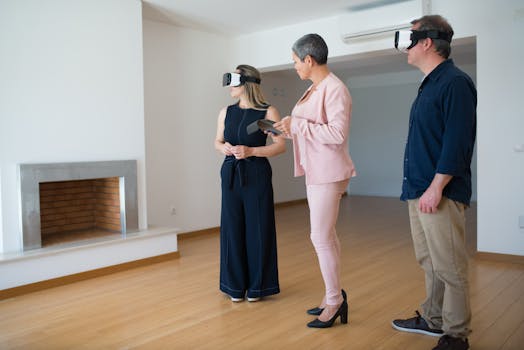
Smart Homes and Smart Living: The Technological Transformation of European Homes by 2025
Smart Homes and Smart Living are revolutionizing the way we live, work, and interact with our living spaces. As we approach 2025, European homes are undergoing a significant technological transformation, driven by advancements in artificial intelligence, Internet of Things (IoT), and data analytics. In this article, we will explore the current state of smart homes in Europe, the key technologies driving this transformation, and the benefits and challenges associated with smart living.
Introduction to Smart Homes and Smart Living
Smart Homes and Smart Living refer to the integration of technology and automation in residential settings to enhance the quality of life, convenience, and energy efficiency. Smart homes are equipped with sensors, devices, and systems that can be controlled and monitored remotely, allowing homeowners to manage their living spaces with ease. From voice-controlled lighting and temperature systems to automated security and entertainment systems, smart homes are redefining the concept of modern living.
Current State of Smart Homes in Europe
According to a recent report, the European smart home market is expected to grow significantly by 2025, driven by increasing demand for energy-efficient and convenient living solutions. Countries such as the UK, Germany, and France are leading the adoption of smart home technologies, with a focus on smart lighting, thermostats, and security systems. However, there are still challenges to be addressed, including data privacy concerns, interoperability issues, and high upfront costs.
Key Technologies Driving Smart Homes and Smart Living
Several key technologies are driving the transformation of European homes, including:
- Internet of Things (IoT): The IoT refers to the network of physical devices, vehicles, and other items that are embedded with sensors, software, and connectivity, allowing them to collect and exchange data.
- Artificial Intelligence (AI): AI is being used to develop intelligent systems that can learn and adapt to the habits and preferences of homeowners, enabling personalized experiences and optimized energy consumption.
- Data Analytics: Data analytics is being used to analyze data from various sources, including sensors, devices, and systems, to provide insights on energy consumption, occupancy, and other factors that impact smart living.
Benefits of Smart Homes and Smart Living
The benefits of smart homes and smart living are numerous, including:
- Energy Efficiency: Smart homes can optimize energy consumption by automatically adjusting lighting, temperature, and other systems based on occupancy and usage patterns.
- Convenience: Smart homes provide homeowners with the ability to control and monitor their living spaces remotely, enhancing convenience and flexibility.
- Enhanced Security: Smart homes can be equipped with advanced security systems, including motion detectors, cameras, and alarm systems, to provide an additional layer of protection.
Challenges and Limitations of Smart Homes and Smart Living
Despite the benefits, there are several challenges and limitations associated with smart homes and smart living, including:
- Data Privacy Concerns: The collection and analysis of data from smart devices and systems raise concerns about data privacy and security.
- Interoperability Issues: The lack of standardization and interoperability between different smart devices and systems can limit their effectiveness and create integration challenges.
- High Upfront Costs: The cost of implementing smart home technologies can be prohibitively expensive for some homeowners, limiting adoption and accessibility.






